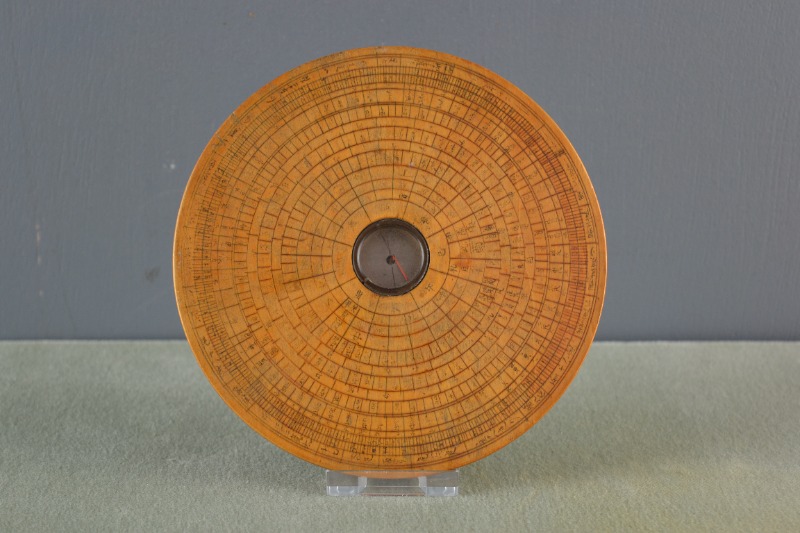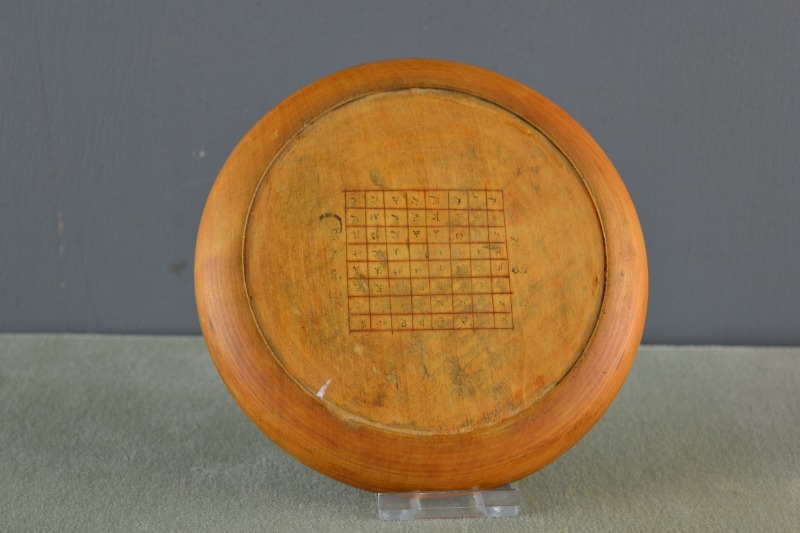Chinese Luopan or Geomancer‘s Compass, late 19th/early 20th century
Age:
late 19th/early 20th century
Material:
Various
Dimensions:
Diameter: 14cm
Shipping:
Standard Parcel
Price:
SOLD
An antique geomancer’s or feng shui compass with 14 rings. The inscription on the back likely indicates the maker and province.
Writing in parts rubbed away. Compass itself works well. Similar examples can be found in the Horniman, Greenwich and Science Museums.
Geomancy is used in China to determine the most auspicious positioning for burial sites or buildings. It is also used to select the best times and locations for important events. The needle points towards the south magnetic pole. Concentric tables expanding out from the middle, containing data relating to astrology, time of day, the elements, directions, and forms of landscape - all the various factors thought to help in deciding the best orientation for a building. A luopan typically contains markings for 24 directions. This translates to 15 degrees per direction. The earliest compasses originated in China around the second century BC, and were used for geomancy long before they were ever used for navigation.


